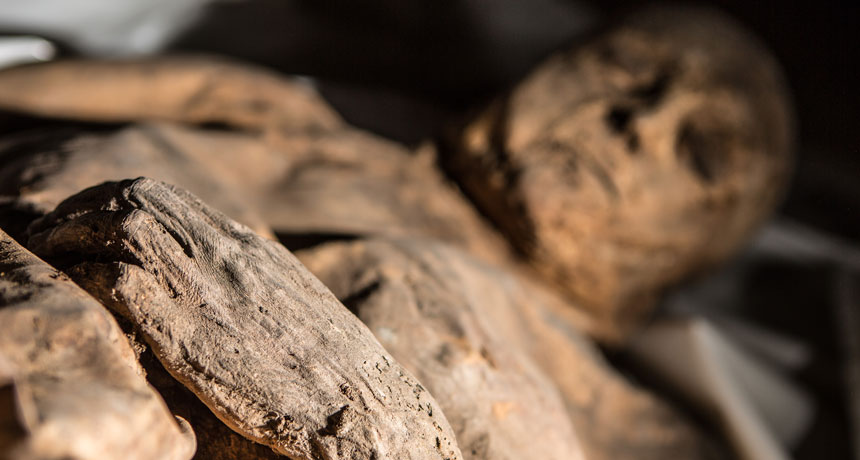Oldest traces of smallpox virus found in child mummy

A child mummy buried in a church crypt in Lithuania could hold the oldest genetic evidence of smallpox.
Traces of the disease-causing variola virus linger in the mummy, which dates to about 1654, evolutionary geneticist Ana Duggan and colleagues report December 8 in Current Biology. Previously, a team of researchers had reported variola DNA in a roughly 300-year-old Siberian mummy.
Some Egyptian mummies, dating back more than 3,000 years, have pockmarks that scientists have interpreted as signs of smallpox, indicating the disease may have tormented humans for millennia. “The definitive feature of smallpox is a pustular rash,” says Duggan of McMaster University in Hamilton, Canada. “But it isn’t easy to say whether a rash comes from smallpox or chicken pox or measles.”
Duggan’s team analyzed skin from the mummy, believed to be a boy who died between ages 2 and 4. They found DNA from an ancient strain of variola, and compared it with dozens of strains from the 20th century. The ancient and modern strains weren’t all that different, the researchers found. They shared a common ancestor that dates to around the late 16th century, not long before the boy died.
“It’s a little bit curious,” Duggan says. More diversity might be expected of a virus that had been kicking around since ancient Egyptian times. The find could suggest that “the timeline of smallpox existing in humans isn’t that deep at all.”
In fact, historical mortality records suggest that around the late 16th century, smallpox seemed to go “from something that occasionally caused infection to more of an epidemic disease,” Duggan says.
But researchers can’t say for sure when smallpox started affecting humans on a large-scale, she cautions. Whether or not those ancient Egyptian mummies had smallpox is still an open question, she says. “We haven’t closed it.”